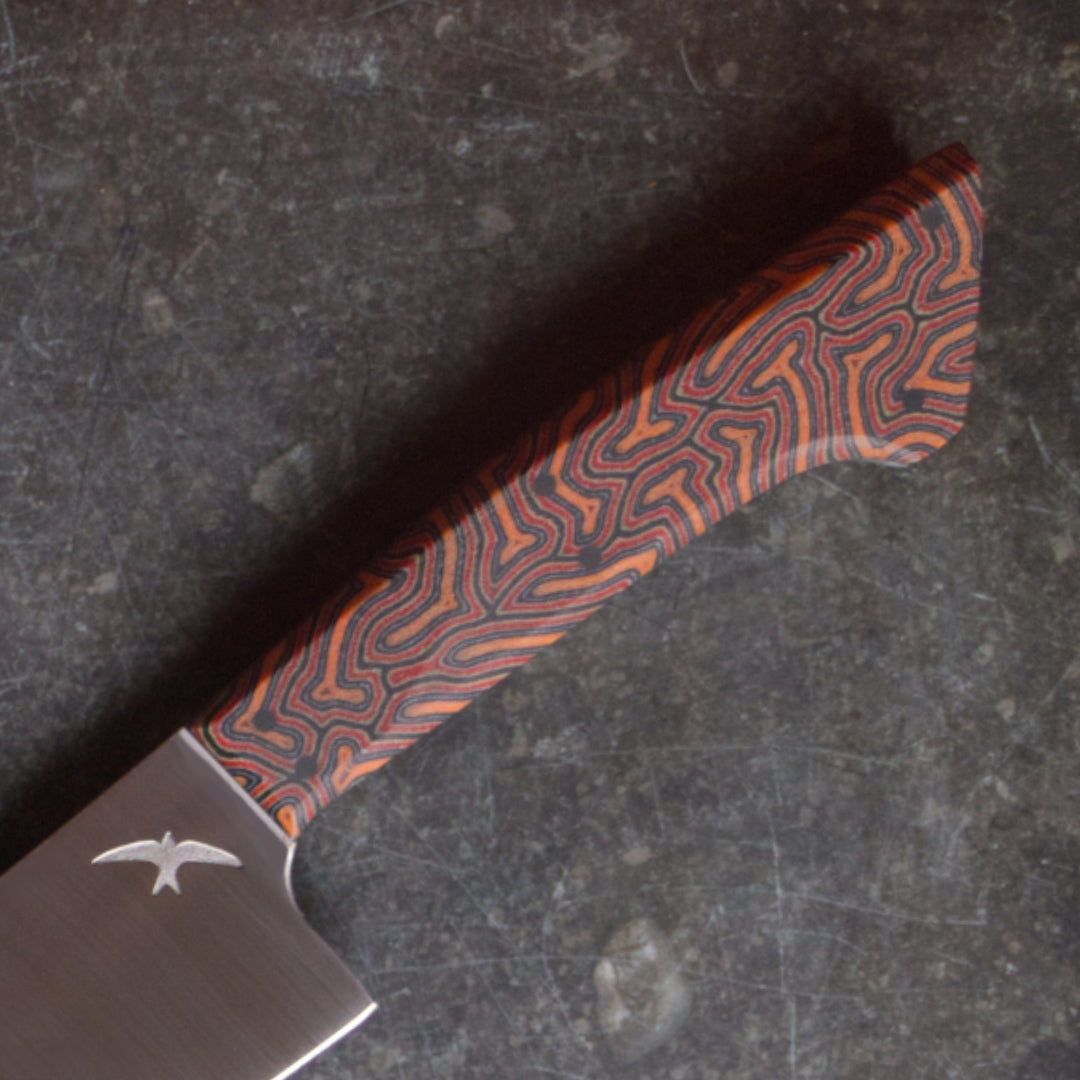Handle Materials
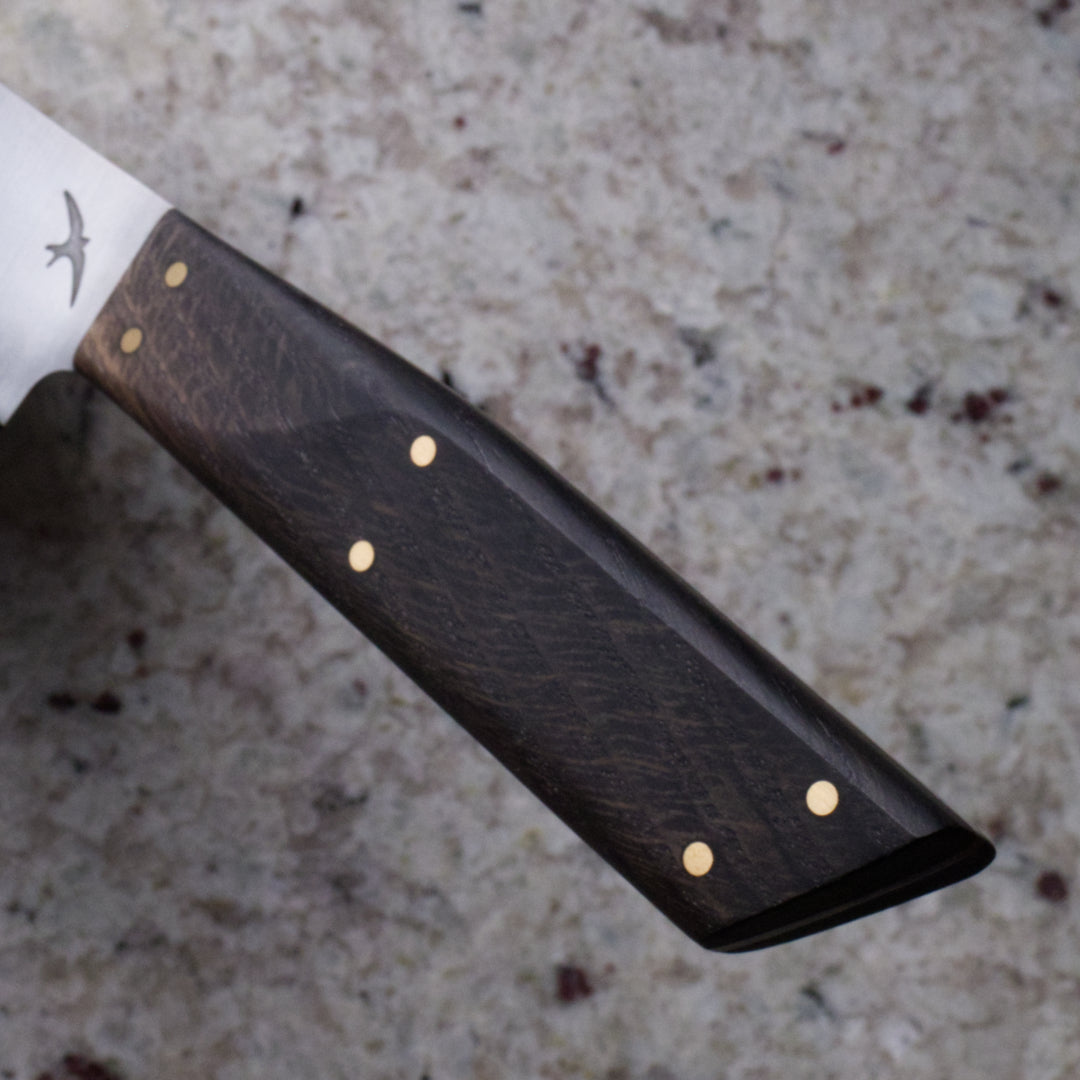
Hardwood
Hardwood is harvested from broadleaf trees. Its density varies depending on species, the denser of which e.g. desert ironwood, making for excellent handles due to their stability and resistance to moisture. The variety of hardwoods available make for an incredible selection of figure and colours. When using lighter hardwoods, I stabilise them in-house with heat curing epoxy to improve their density and stability, while maintaining their natural beauty.
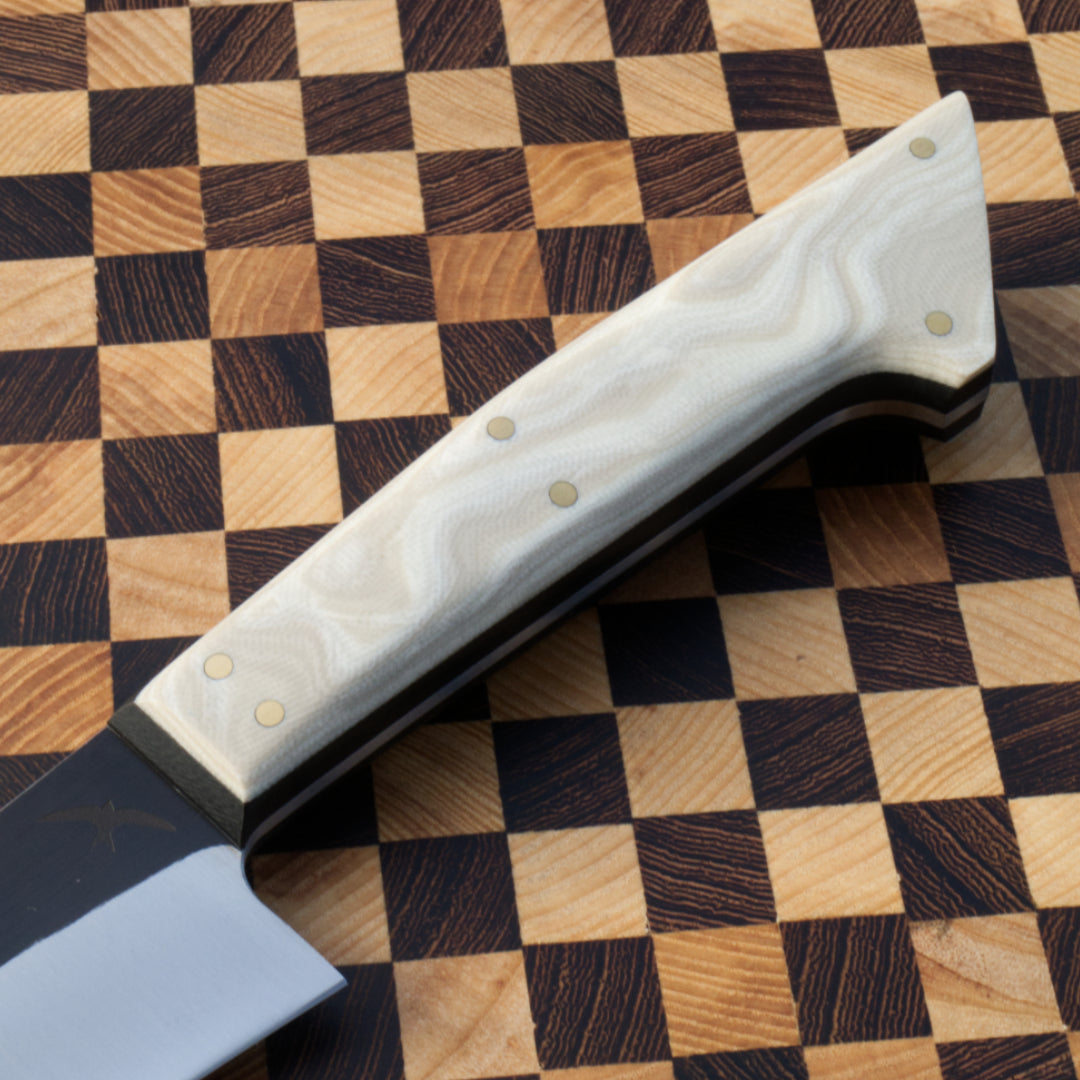
G10
G10 or garolite is a composite material made from woven fibreglass cloth and a heat curing epoxy resin. It is impervious to moisture and a range of chemicals. It’s incredibly strong, stable and durable making it a great choice for kitchen knife handles. Traditionally it has uniform layers, but recently it had been made as burl, where the fibreglass is cut into small sections and laid randomly creating some interesting results.
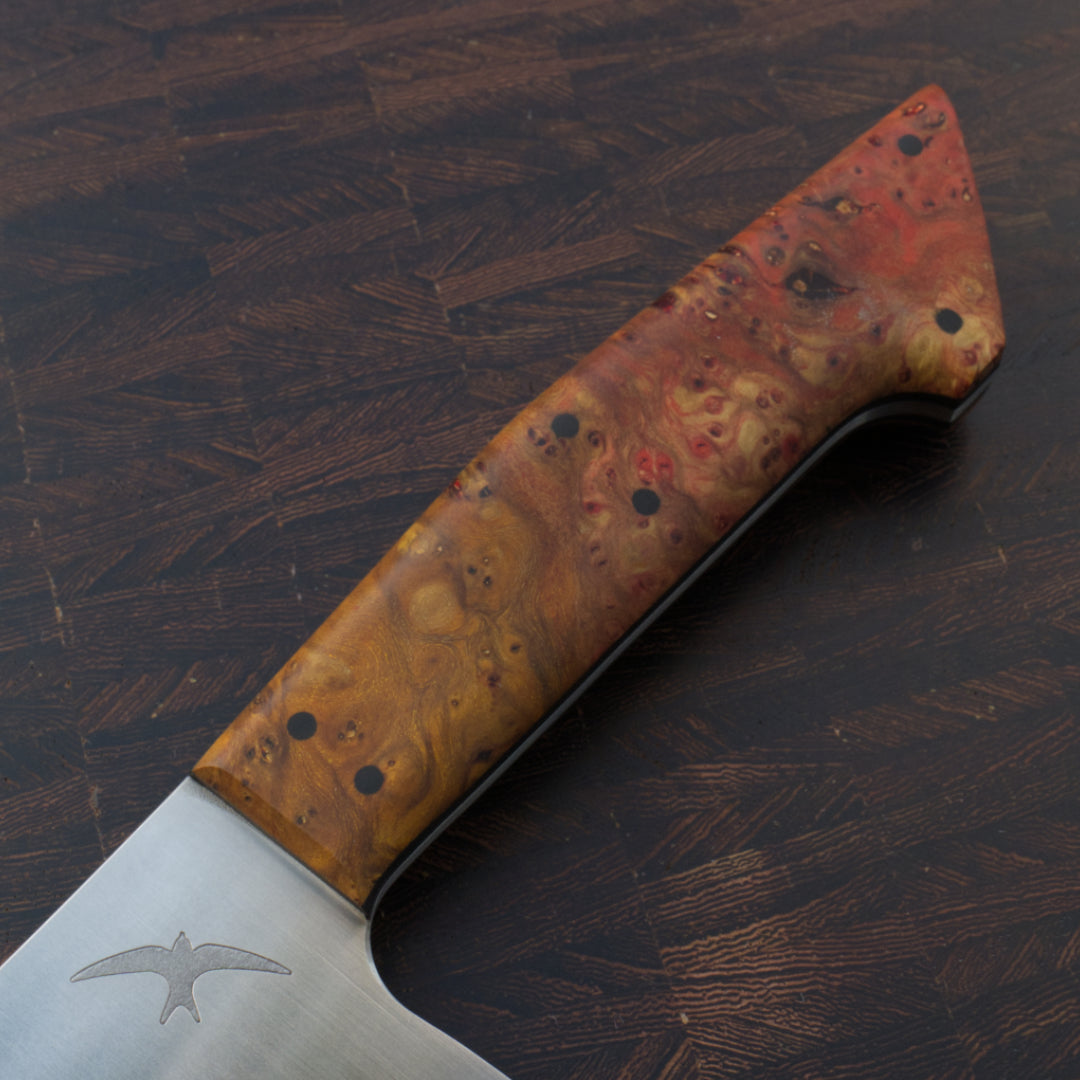
Burlwood
Burlwood is irregular patterning within a tree caused by stress or damage. It is recognisable for the unique swirls and intricate patterns. It is a popular choice for knife handles, though usually stabilised with the addition of a heat curing epoxy to improve strength and density. I stabilise most burlwood in-house, often with the addition of epoxy dyes making for some beautiful results.
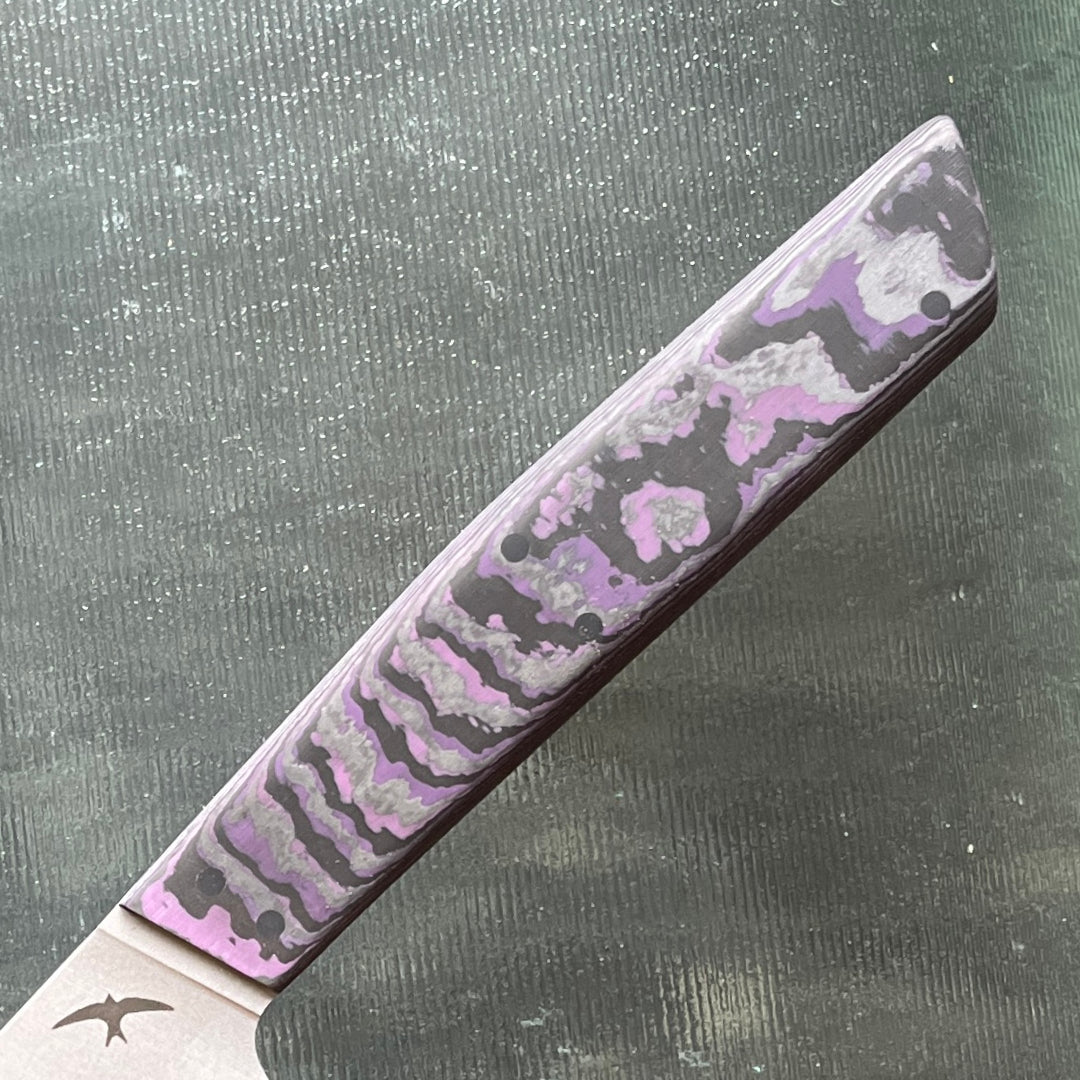
Carbon Fibre
Carbon fibre is a lightweight, strong and stiff composite material made by combining thin strands of carbon and epoxy resin. I almost exclusively use Fatcarbon, who make coloured carbon fiber billets from recycled carbon fibre and biobased epoxy resins. The orientation of the layers affect the way light is reflected making for some of the most beautiful handles as well as the most stable.

